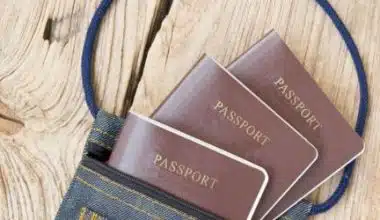Airport arrival times vary depending on factors like airport size and circumstances. Domestic flights usually recommend arriving two hours before departure, while international flights usually require three hours. Various activities will need to be processed before the flight takes off and this should enable a passenger to arrive early to avoid consequences. Here in this article, we outline the benefits as well as the importance of arriving at the airport early.
How Early To Arrive At The Airport
When it comes to how early to arrive at the airport, the recommended arrival times differ. For domestic flights, most airlines suggest arriving two hours before departure, but this can depend on factors such as the airport size and your specific circumstances. For international flights, arriving three hours before departure is generally recommended due to additional processes like passport verification and customs. Check with your airline for their specific recommendations and allow extra time during peak travel periods.
Factors to Consider When Deciding How Early to Arrive at the Airport
When deciding how early to arrive at the airport, there are several factors to consider. They are
#1. Airport Security Procedures
Airport security time varies based on airport size, time of day, and security measures. Some airports offer expedited screening programs like TSA PreCheck, which allow passengers to bypass a dedicated security line without removing certain items, saving time.
#2. Check-In Requirements
Different airlines have different check-in requirements, even for domestic flights. Some airlines may require you to check in a certain amount of time before your flight, especially if you have checked baggage. Check the specific check-in requirements of your airline to ensure you arrive on time.
#3. Airport Size and Staffing
The size of the airport and the level of staffing can impact the time it takes to get through security and other airport procedures. Smaller airports may have limited staffing, which could result in longer wait times.
#4. Distance from Home or Hotel
The distance between your home or hotel and the airport can affect how early you need to arrive. If you’re staying near the airport, you may be able to arrive closer to your departure time. However, if you have to travel a significant distance to reach the airport, it’s advisable to allow more time for potential traffic or transportation delays.
#5. Flight Type and Destination
The type of flight you’re taking and the destination can also impact how early you should arrive. International flights generally require more time for check-in, security, and immigration procedures compared to domestic flights.
#6. Personal Preferences and Comfort
Your personal preferences and comfort level can also play a role in deciding how early to arrive at the airport. Some people prefer to arrive early to avoid any potential stress or rush, while others may feel comfortable arriving closer to their departure time.
#7. Time of Day and Day of the Week
The time of day and day of the week can impact airport congestion and overall travel times. Rush hour traffic or peak travel times can result in longer travel times to the airport. Similarly, weekends or holidays may see increased passenger volumes.
#8. Baggage Considerations
If you’re traveling with checked baggage, you need to factor in the time required to drop off your bags. Some airports may have designated drop-off locations or require additional documentation for certain types of baggage, such as oversized or fragile items. Ensure you have enough time to complete this process.
#9. Connecting Flights or Layovers
If you have a connecting flight or a layover, it’s essential to consider the time required to navigate through the airport, clear customs and immigration (if applicable), and reach your next gate. Allow ample time between flights to minimize the risk of missing your connection.
#10. Special Needs or Assistance
If you or someone you are traveling with requires special assistance, such as wheelchair support or traveling with a service animal, it’s advisable to arrive early to ensure you have enough time to coordinate and receive the necessary assistance.
How Early To Arrive At The Airport For An International Flight
International flights require a minimum of three hours of arrival at the airport before the scheduled departure time. Most airlines offer this recommendation based on various factors.
#1. Check-In and Documentation
International flights often require additional check-in procedures and documentation compared to domestic flights. Arriving early on flights ensures a smooth check-in process and ensures all necessary documents are in order.
#2. Security Screening
International flights involve more stringent security measures compared to domestic flights. The screening process may include additional checks, such as passport verification and potential secondary screenings. Allowing extra time ensures that you can go through security without feeling rushed.
#3. Immigration and Customs
International travel involves going through immigration and customs procedures, both at your departure and arrival airports. These processes can take time, especially if there are long queues or if you need to complete additional forms or declarations.
#4. Baggage Drop-Off
If you have checked baggage, you will need to drop it off at the designated counters. International flights may have specific requirements for baggage drop-off, such as weight restrictions or additional security checks.
#5. Airport Congestion
International airports can be busy, especially during peak travel periods. Arriving early allows you to navigate through the airport more smoothly, avoiding long queues at check-in counters, security checkpoints, and immigration desks. It also gives you time to find your gate and familiarize yourself with the airport layout.
#6. Airport Size and Layout
Larger airports with multiple terminals or concourses may require more time to navigate. Familiarize yourself with the airport layout and the distance between check-in counters, security checkpoints, and departure gates.
#7. Traffic and Transportation
Consider the traffic conditions and transportation options to the airport. Heavy traffic or delays in public transportation can significantly impact your travel time. Plan accordingly and allow extra time for potential delays.
#8. Airline Restrictions and Policies
Different airlines may have specific policies and restrictions that could affect your arrival time. Some airlines may require additional time for check-in, security procedures, or boarding.
#9. Special Circumstances or Events
If any special circumstances or events are happening around the time of your flight, such as holidays, festivals, or major conferences, it’s advisable to arrive earlier. These events can lead to increased passenger volumes and longer wait times at various airport checkpoints.
#10. Airport Services and Amenities
International airports often offer a wide range of services and amenities, such as duty-free shopping, lounges, restaurants, and relaxation areas. Arriving early allows you to explore and take advantage of these facilities before your flight.
How Early To Arrive At The Airport With TSA Precheck
Guidelines on how early to arrive at the airport with TSA PreCheck For domestic flights, arriving 90 minutes before departure is generally recommended if you have TSA PreCheck, assuming you have no bags to check and have checked in online. For international flights, it is best to arrive three hours before departure, regardless of having TSA PreCheck, to account for additional processes.
Benefits of Arriving Early At The Airport With TSA Precheck
Arriving early at the airport with TSA PreCheck offers several benefits, including:
#1. Expedited Security Screening
The primary benefit of TSA PreCheck is the expedited security screening process. With TSA PreCheck, you can enjoy a dedicated security lane where you do not need to remove your shoes, belts, light jackets, laptops, or 3-1-1 liquids. This saves time and allows you to breeze through security checkpoints more quickly.
#2. Shorter Wait Times
TSA PreCheck lanes have shorter wait times compared to regular security lanes. This means you can arrive at the airport closer to your departure time, reducing the amount of time spent waiting in line.
#3. Convenience and Efficiency
TSA PreCheck provides a more convenient and efficient travel experience. You can keep your belongings organized and intact, avoiding the hassle of removing and repacking items at the security checkpoint. This can help reduce stress and make your journey more seamless.
#4. Reduced Travel Delays
By arriving early with TSA PreCheck, you can minimize the risk of travel delays. Even with expedited screening, unexpected circumstances can arise, such as long lines, technical issues, or additional security measures. Allowing extra time ensures you have a buffer to handle any unforeseen situations.
#5. Flexibility for Other Airport Procedures
While TSA PreCheck expedites the security screening process, it’s important to consider other airport procedures, such as check-in, baggage drop-off, and immigration. Arriving early gives you sufficient time to complete these procedures without feeling rushed or stressed.
#6. Consistent Experience
With TSA PreCheck, you can enjoy a consistent experience across participating airports in the United States. This means you can expect the same expedited screening benefits regardless of the airport you are departing from.
#7. Reduced Stress and Anxiety
Arriving early with TSA PreCheck allows you to have a more relaxed and stress-free travel experience. You can avoid the anxiety of rushing through the airport and worrying about missing your flight. This can contribute to a more enjoyable journey.
#8. Time for Pre-Flight Preparations
Arriving early gives you time to complete pre-flight preparations, such as organizing your travel documents, checking your baggage weight, printing boarding passes, and ensuring you have all the necessary items for your journey. This can help you avoid any last-minute stress or delays.
#9. Peace of Mind for Connecting Flights
If you have a connecting flight, arriving early with TSA PreCheck provides a buffer in case your first flight is delayed. It allows you enough time to go through security and reach your connecting gate without feeling rushed.
#10. Better Travel Experience
TSA PreCheck enhances aviation security and provides a better travel experience. With TSA PreCheck, you can leave your shoes, belt, and light jacket on while you go through security, which can make the process more comfortable and convenient. You can also keep your laptop and liquids in your bag, which can save you time and hassle.
Can I Arrive At The Airport 1 Hour Before The Flight?
Most airlines recommend arriving at the airport 1-2 hours before the scheduled departure time for domestic flights in the United States. This allows for more time for check-in, security procedures, and unforeseen circumstances. Experienced travelers may need less time, but the recommended two-hour arrival window offers a less rushed experience. These recommendations may vary depending on airport size and circumstances, so it’s advisable to check with your airline for specific guidelines and updates.
How Long Before The International Flight Should I Get To The Airport?
It is recommended to arrive at the airport at least three hours before an international flight. Factors such as airport size, busyness, TSA pre-check, bag check, and food preferences can influence the time you arrive. Some travelers prefer to arrive earlier than the recommended time, while others prefer to arrive closer to their flight departure time. It’s best to consult your airline and airport for specific recommendations and consider your travel needs and preferences.
Can I Enter An Airport 6 Hours Before A Flight?
Yes, you can enter an airport 6 hours before a flight, but it may not be necessary or recommended. Most airlines recommend arriving at the airport at least two hours before departure for domestic flights and three hours before departure for international flights. If you arrive at the airport six hours before your flight, you may have to wait a long time before check-in, security, and boarding.
Is 1.5 Hours Enough Before A Flight?
Arriving at the airport 1.5 hours before a flight can be sufficient in some cases, but it may not provide a comfortable buffer for unexpected delays or issues. Arriving earlier can provide a more relaxed and stress-free experience, especially for infrequent travelers or during peak travel periods. Checking with your airline for specific guidelines is recommended.
Can I Wait At The Airport Overnight?
Airports may allow overnight passengers to stay, but it depends on the airport’s rules and policies. Some allow overnight stays, while others do not allow or prefer airport sleepers. Some airports have lounges or sleeping pods for a fee, while others have designated areas or benches. If you’re stranded at the airport due to a flight delay, cancellation, or extended stopover, you may need to rest at the terminal.
Where Can I Sleep In The Airport?
Sleeping at the airport can be done in various ways, depending on the airport’s rules and policies. Some options include sleeping pods, designated lounges, quiet areas, comfortable seats in the international terminal, and staff lounges. It’s crucial to check with the airport directly for specific policies and recommendations. Safety considerations include bringing noise-canceling headphones, an eye mask, and warm accessories; keeping valuables secure; dressing comfortably; verifying if sleeping in the terminal is allowed; choosing a quiet area; and cleaning up before bed.
How Many Hours We Can Stay in The Airport Lounge?
The duration of stay in an airport lounge can vary, but most lounges allow a stay of 2–3 hours before departure or after landing. Some lounges may offer extended stays of up to 5 hours. However, these time limits are rarely enforced, and if the lounge is not full, the staff may not pay much attention to how long you stay. It’s important to check the specific rules of the lounge you plan to visit, as some lounges may have their own time limits.
Can I Stay At The Airport During A Layover?
During a layover, you have the option to stay at the airport or leave, depending on the duration of the layover, visa requirements, and personal preferences. For domestic layovers, staying at the airport or leaving is generally possible. For international layovers, leaving the airport may require a visa and going through customs and immigration. It’s important to consider the duration of the layover and any specific guidelines or restrictions at the airport and in the layover country.
Conclusion
International flights require a minimum of three hours of arrival at the airport before departure time due to additional check-in procedures, security screening, immigration and customs procedures, and special circumstances or events. Arriving early ensures smooth check-in, security screening, immigration, customs, baggage drop-off, and airport congestion, and allows time for familiarization with the airport layout. Allow extra time during peak travel periods and consult your airline for specific recommendations. For domestic flights, 90 minutes before departure is generally recommended, while international flights should arrive three hours earlier.
- WHAT IS THE KNOWN TRAVELER NUMBER KTN? All You Need To Know
- HOW EARLY CAN YOU CHECK FOR A FLIGHT? All You Need To Know
- WHAT IS REDRESS NUMBER? All You Need To Know
- FIRST-TIME FLYING TIPS: 15 Best Tips
- HOW EARLY CAN YOU CHECK BAGS FOR A FLIGHT?






